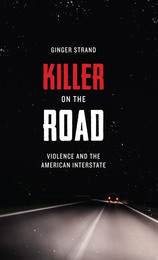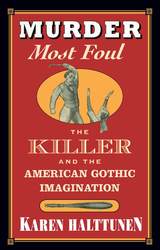
At once a gripping story and an in-depth look at the grief of losing a child, Justice for Marlys relates the true account of a serial killer, Joseph Ture Jr., who slipped past the law again and again during a three-year-long crime spree. It was Ture who brutally murdered Marlys Wohlenhaus in her own home. John S. Munday, the husband of Marlys’s mother, reconstructs the murder and the seventeen-year investigation that led to the capture and conviction of Ture, allowing the reader to explore the horror, obsession, dedication, and finally the peace that he and his wife experienced in the search for and eventual conviction of her daughter’s killer. Justice for Marlys generates suspense and sympathy as Munday recounts how Marlys’s case was solved through the efforts of the victim’s tenacious family, supportive news media, and persistent investigators.
Munday gives readers a terrifying sense of the unimaginable grief and despair in the hearts of those who lose a child, yet he also shares his intensely personal exploration of the resilience and power within the human spirit.
John S. Munday is an intellectual property attorney who lives with his wife Fran in Isanti County, Minnesota. He is also the author of Surviving the Death of a Child, a contributing editor for Grief Digest, and a member of the board of directors of the Other Side Magazine.

Starting in the 1950s, Americans eagerly built the planet’s largest public work: the 42,795-mile National System of Interstate and Defense Highways. Before the concrete was dry on the new roads, however, a specter began haunting them—the highway killer. He went by many names: the “Hitcher,” the “Freeway Killer,” the “Killer on the Road,” the “I-5 Strangler,” and the “Beltway Sniper.” Some of these criminals were imagined, but many were real. The nation’s murder rate shot up as its expressways were built. America became more violent and more mobile at the same time.
Killer on the Road tells the entwined stories of America’s highways and its highway killers. There’s the hot-rodding juvenile delinquent who led the National Guard on a multistate manhunt; the wannabe highway patrolman who murdered hitchhiking coeds; the record promoter who preyed on “ghetto kids” in a city reshaped by freeways; the nondescript married man who stalked the interstates seeking women with car trouble; and the trucker who delivered death with his cargo. Thudding away behind these grisly crime sprees is the story of the interstates—how they were sold, how they were built, how they reshaped the nation, and how we came to equate them with violence.
Through the stories of highway killers, we see how the “killer on the road,” like the train robber, the gangster, and the mobster, entered the cast of American outlaws, and how the freeway—conceived as a road to utopia—came to be feared as a highway to hell.

Confronting murder in the newspaper, on screen, and in sensational trials, we often feel the killer is fundamentally incomprehensible and morally alien. But this was not always the popular response to murder. In Murder Most Foul, Karen Halttunen explores the changing view of murder from early New England sermons read at the public execution of murderers, through the nineteenth century, when secular and sensational accounts replaced the sacred treatment of the crime, to today's true crime literature and tabloid reports.
The early narratives were shaped by a strong belief in original sin and spiritual redemption, by the idea that all murders were natural manifestations of the innate depravity of humankind. In a dramatic departure from that view, the Gothic imagination--with its central conventions of the fundamental horror and mystery of the crime--seized upon the murderer as a moral monster, separated from the normal majority by an impassable gulf. Halttunen shows how this perception helped shape the modern response to criminal transgression, mandating criminal incarceration, and informing a social-scientific model of criminal deviance.
The Gothic expression of horror and inhumanity is the predominant response to radical evil today; it has provided a set of conventions surrounding tales of murder that appear to be natural and instinctive, when in fact they are rooted in the nineteenth century. Halttunen's penetrating insight into her extraordinary treasure trove of creepy popular crime literature reveals how our stories have failed to make sense of the killer and how that failure has constrained our understanding and treatment of criminality today.
READERS
Browse our collection.
PUBLISHERS
See BiblioVault's publisher services.
STUDENT SERVICES
Files for college accessibility offices.
UChicago Accessibility Resources
home | accessibility | search | about | contact us
BiblioVault ® 2001 - 2024
The University of Chicago Press









